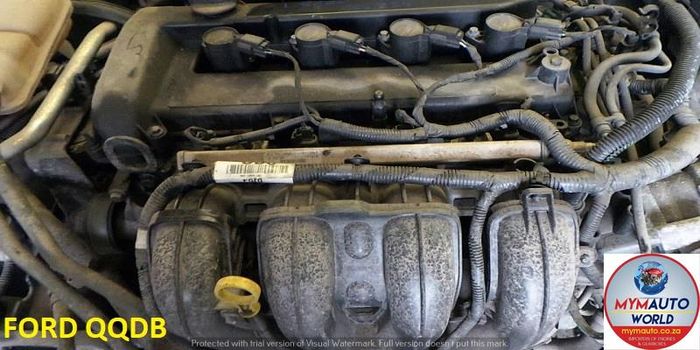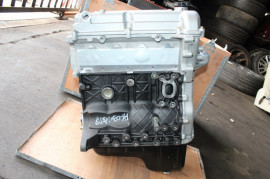Opel Corsa Engine: Common Issues and Exactly How to Fix Them
Opel Corsa Engine: Common Issues and Exactly How to Fix Them
Blog Article
Exploring the Inner Operation of a Compact Lorry's Engine System
As chauffeurs, we usually take for given the detailed procedures that occur within the boundaries of our car's engine system. The compact yet complex equipment that pushes us forward is a wonder of engineering accuracy and sychronisation. From the controlled surges in the combustion chamber to the careful timing of fuel injection, every element plays an essential role in the smooth procedure of the engine. In this exploration of a portable car's engine system, we will certainly decipher the inner operations of this mechanical symphony, clarifying the mysteries that drive us onward on our daily journeys.
Combustion Refine Review
The combustion process in a portable vehicle's engine system is an essential mechanism that successfully converts fuel into power to power the lorry. This process occurs within the combustion chamber of the engine, where gas and air mix, fire up, and create regulated surges. The burning process contains four primary phases: intake, compression, exhaust, and power.
Throughout the intake phase, the piston moves downward, attracting in a blend of air and fuel right into the combustion chamber. The following stage, compression, includes the piston moving up, compressing the air-fuel mix to boost its potency. Consequently, in the power stage, the trigger plug sparks the compressed mixture, causing a rapid growth of gases that forces the piston back down. This descending movement produces the power required to drive the car. Ultimately, in the exhaust stage, the scorched gases are removed from the burning chamber through the exhaust valve, preparing the chamber for the following cycle. This cyclic burning process is fundamental to the procedure of a portable vehicle's engine system, ensuring reliable power conversion for propulsion.
Piston and Cylinder Interaction

The piston's exact fit within the cyndrical tube is important for preserving ideal compression and avoiding energy loss during combustion. Tight clearances in between the piston and cyndrical tube walls make certain efficient securing, permitting the piston to relocate efficiently without enabling gases to leakage past. Correct lubrication is also important to decrease friction and put on in between these elements, boosting durability and performance.
Additionally, the design and materials made use of in making the piston and cylinder influence engine performance and durability. Modern engines often use light-weight yet resilient materials like read review light weight aluminum alloys for pistons and cylinder linings to reduce inertia and boost thermal performance. Overall, the harmonious interaction between the piston and cyndrical tube is essential to the engine's functionality and total performance.
Fuel Shot System Performance
Fuel shot systems in compact lorry engines play a critical duty in exactly delivering gas to the combustion chamber for efficient and regulated ignition. The fuel shot system works by infusing gas into the burning chamber at the ideal minute during the engine's procedure (opel corsa engine). This accurate timing makes sure that the gas mixes equally with the air for proper burning, leading to enhanced gas effectiveness and minimized discharges
There are primarily 2 types of fuel shot systems used in compact lorry engines: port fuel injection (PFI) and straight fuel injection (DFI) PFI systems infuse gas into the consumption port before the intake valve, while DFI systems infuse gas directly right into the burning chamber. Both systems have their advantages, with DFI providing far better gas atomization and PFI offering a more affordable option.
Recognizing Engine Cooling Systems
Efficient procedure of a compact automobile's engine depends heavily on the effectiveness of its cooling devices. The air conditioning system in a small vehicle generally consists of additional resources numerous parts working together to manage the engine temperature. Understanding these engine air conditioning mechanisms is essential for preserving the performance and long life of a small lorry's engine system.

Exhaust System Components Explained
The optimal functioning of a small automobile's engine air conditioning systems relies on a complementary system referred to as the exhaust system, which consists of different crucial components for ensuring reliable exhausts and engine efficiency. The exhaust system includes elements such as the exhaust manifold, catalytic converter, muffler, and tailpipe. The exhaust manifold collects exhaust gases from the engine's cyndrical tubes and routes them to the catalytic converter. The catalytic converter then transforms hazardous toxins in the exhaust into much less hazardous exhausts before releasing them via the muffler and tailpipe.
One vital component of the exhaust system is the oxygen sensor, which checks the oxygen levels in the exhaust gases to help control gas consumption and make sure optimal engine performance. opel corsa engine. In addition, the resonator may be present in some exhaust systems to minimize sound levels. In general, the exhaust system plays an essential role in maintaining engine effectiveness, reducing damaging discharges, and making certain a quieter driving experience for compact automobile proprietors

Verdict
Finally, the portable lorry's engine system is a complex combination of parts that function with each other pop over to this site to help with the combustion procedure, transform gas right into energy, and expel waste gases. Understanding the inner functions of the engine system, consisting of the piston and cyndrical tube interaction, gas injection system, engine cooling mechanisms, and exhaust system components, is vital for keeping optimum efficiency and performance of the vehicle.
The combustion process in a compact car's engine system is an important device that successfully transforms gas right into energy to power the car.Fuel injection systems in small car engines play a vital function in exactly providing fuel to the combustion chamber for regulated and reliable ignition.There are largely 2 types of fuel injection systems made use of in portable automobile engines: port gas injection (PFI) and straight fuel shot (DFI) Recognizing these engine air conditioning systems is important for maintaining the efficiency and long life of a small car's engine system.
The optimal functioning of a portable lorry's engine air conditioning mechanisms depends on a corresponding system recognized as the exhaust system, which makes up various essential parts for making sure effective discharges and engine performance.
Report this page